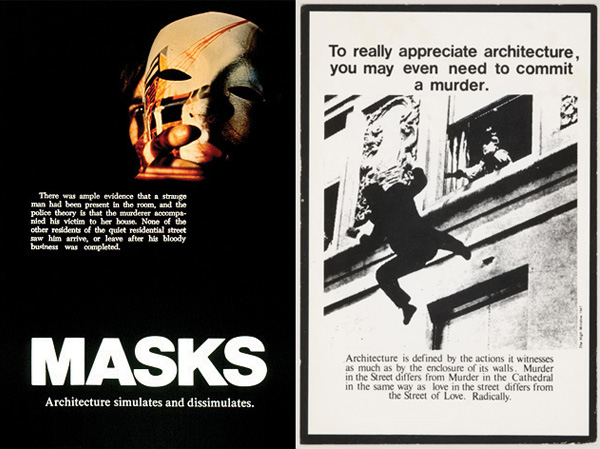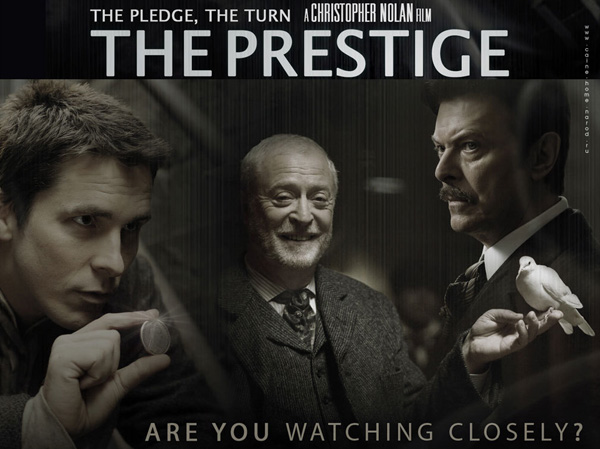
Preview to AR140 – Prestige
Share
Once again we’re offering you the opportunity to contribute an article, a project review or to nominate a likely suitor for either. As with all issues of the magazine, the last page is reserved for a preview on the issue. In AR139–Disclosure (on sale April 2015) you will see a preview to AR140. Here is the text, take a look and see if anything springs to mind. We look forward to receiving your ideas or work.
In Bernard Tschumi’s Architecture and Disjunction (1994) the relationship between architecture and reality, notably in ‘Fragment 7 Metaphor of seduction – the Mask’ (p090–091) is explored, noting that ‘there is rarely pleasure without seduction, or seduction without illusion. Consider: sometimes you wish to seduce, so you act in the most appropriate way in order to reach your ends. You wear a disguise. Conversely, you may wish to change roles and be seduced: you consent to someone else’s disguise, you accept his or her assumed personality for it gives you pleasure, even if you know that it dissimulates “something else”.’
The artistic practice of Surrealism is architecture’s dark secret. While Expressionism, Futurism, Constructivism and Cubism (Purism) resonate with Modern architecture, Surrealism plays its own part in architectural production and theory from the 1970s onwards. Characterised by representations of searching and finding, of veiling and revealing, presence and absence, thresholds and passages, Surrealism has no clear boundaries or fixed identities; and yet it remains an untapped medium in architecture. While Peter Eisenman supplanted grids in his unbuilt 1978 Cannaregio project and Rem Koolhaas published his populist Delirious New York (1978) on the basis of Salvador Dali’s paranoid-critical activity, Tschumi developed the Advertisements for Architecture series (1976-1977) – a series of postcard size text–image juxtapositions. Surrealism and architecture were late seventies bedfellows – often fantastical and prophetic, creating illusions and concealing identities.
As Tschumi notes ‘[Architecture’s] disguises are numerous: facades, arcades, squares, even architectural concepts become the artefacts of seduction. Like masks, they place a veil between what is assumed to be reality and its participants (you or I)…once you uncover that which lies behind the mask, it is only to discover another mask…[they] possess a double role: they simultaneously veil and unveil, simulate and dissimulate.’
Similarly, Christopher Nolan’s film, The Prestige (2006), features a doubling and questioning of identities, as well as the nature of time and perception and game-playing rivalry. His central characters, two stage magicians in Victorian London, aim to trick the audience. Audience deceit, in this instance, is governed by three stages: firstly the ‘pledge’ (the audience is shown something); secondly, the ‘turn’ (disappearance); and, finally, the ‘prestige’ (the miraculous reappearance). It is a mesmeric attempt to deceive and to puzzle, with the public delighting in being fooled and astonished.
If AR138–Margins was read as the ‘pledge’ and AR139–Disclosure as the ‘turn’, then AR140 is the ‘prestige’.
AR140–Prestige
According to Harvard University professor Homi K. Bhabha: ‘The arts and humanities contribute to the process of cultural translation by propagating and protecting the “right to narrate” – the authority to tell stories, recount or recast histories, that create the web of social life and change the direction of its flow.’ So, if architecture is all about veiled concepts, words and drawings, then what about the identity behind the building: the architect. In AR140 architects appear in writing but will not necessarily be themselves.
Freedom of expression is an individual right and, as Bhabha explains, it is ‘the dialogic right to address and be addressed, to signify and be interpreted, to speak and to be heard, to make a sign and to know that it will receive respectful attention.’
AR140 examines the idea of the concealing mask and the ability (and right) to be heard. It builds on its three previous editions by first outlining the problem, then exposing the illusion and, finally, by offering some solutions.
If you have any suggestions, ideas or comments send them to submissions@arasiapacific.com or comment below. We’re eager to know your thoughts. Cheers, Michael Holt.


















